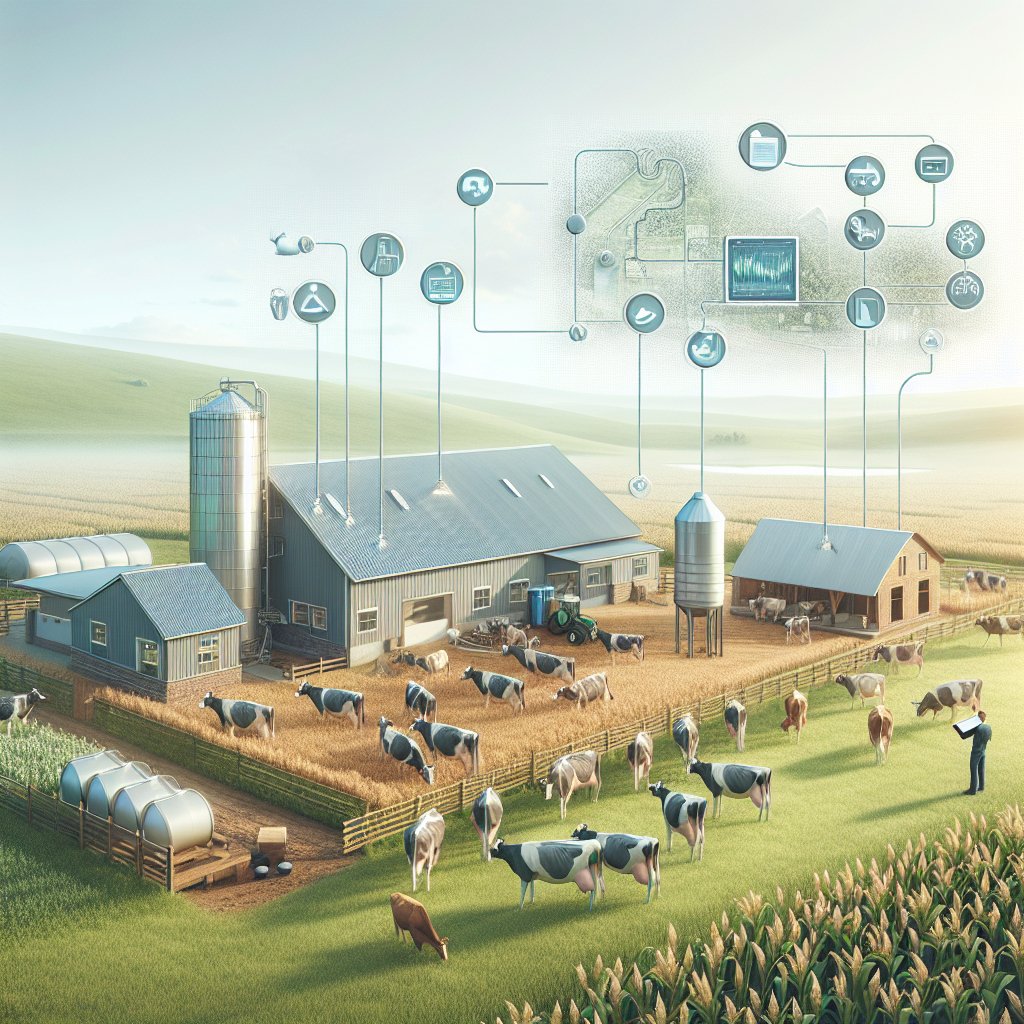Starting a dairy farm can be a rewarding venture, but it comes with its own set of challenges and requires careful planning and execution. This article will guide you through the essential steps and considerations for establishing a successful dairy farm, from selecting the right breed of cattle to managing daily operations and overcoming common obstacles.
Choosing the Right Breed of Cattle
The first step in starting a dairy farm is selecting the right breed of cattle. Different breeds have varying milk production capacities, adaptability to climates, and resistance to diseases. Some of the most popular dairy breeds include Holstein, Jersey, Guernsey, Ayrshire, and Brown Swiss. Each breed has its own advantages and disadvantages, so it’s crucial to choose one that aligns with your farm’s goals and environmental conditions.
Holsteins, for example, are known for their high milk yield, making them a popular choice for large-scale operations. However, they may require more intensive management and feeding. Jerseys, on the other hand, produce milk with higher butterfat content, which is ideal for cheese production. They are also known for their adaptability and lower feed requirements, making them suitable for smaller farms or those with limited resources.
When selecting a breed, consider factors such as milk production goals, climate, available resources, and market demand. Consulting with local agricultural experts or visiting established dairy farms can provide valuable insights into the best breed for your specific situation.
Setting Up the Farm Infrastructure
Once you’ve chosen the right breed, the next step is setting up the necessary infrastructure for your dairy farm. This includes constructing barns, milking parlors, feed storage facilities, and waste management systems. Proper infrastructure is essential for ensuring the health and productivity of your cattle, as well as the efficiency of your operations.
Barns should provide adequate shelter and ventilation to keep cattle comfortable in all weather conditions. They should also be designed to facilitate easy cleaning and waste removal. Milking parlors need to be equipped with modern milking machines and systems to ensure efficient and hygienic milk collection. Additionally, having a reliable water supply and feed storage facilities is crucial for maintaining the health and productivity of your herd.
Investing in quality infrastructure may require significant upfront costs, but it is essential for the long-term success of your dairy farm. Consider seeking advice from agricultural engineers or consultants to design and implement an efficient farm layout that meets your specific needs.
Feeding and Nutrition Management
Proper feeding and nutrition management are critical components of a successful dairy farm. Cattle require a balanced diet to maintain optimal health and milk production. This includes a mix of forages, grains, vitamins, and minerals. The specific dietary requirements will vary depending on the breed, age, and lactation stage of the cattle.
Forages, such as hay and silage, should form the bulk of the diet, providing essential fiber and nutrients. Grains, such as corn and barley, can be added to increase energy intake, especially for high-yielding cows. It’s important to work with a livestock nutritionist to develop a feeding plan that meets the nutritional needs of your herd while optimizing milk production and minimizing costs.
Regular monitoring of cattle health and milk yield can help identify any nutritional deficiencies or imbalances. Adjusting the diet based on these observations can improve overall herd performance and profitability.
Health and Disease Management
Maintaining the health of your cattle is crucial for the success of your dairy farm. This involves implementing a comprehensive health management program that includes regular veterinary check-ups, vaccinations, and disease prevention measures. Common health issues in dairy cattle include mastitis, lameness, and reproductive disorders, which can significantly impact milk production and farm profitability.
Preventive measures, such as maintaining clean and hygienic living conditions, providing proper nutrition, and implementing biosecurity protocols, can help reduce the risk of disease outbreaks. Early detection and treatment of health issues are also essential for minimizing their impact on the herd.
Building a strong relationship with a trusted veterinarian can provide valuable support in managing the health of your cattle. Regular health assessments and monitoring can help identify potential issues before they become major problems, ensuring the well-being of your herd and the success of your farm.
Marketing and Selling Your Dairy Products
Once your dairy farm is up and running, the next challenge is marketing and selling your products. Understanding the market demand and consumer preferences is crucial for developing a successful marketing strategy. This may involve producing a variety of dairy products, such as milk, cheese, yogurt, and butter, to cater to different customer needs.
Building a strong brand and establishing a loyal customer base can help differentiate your products in a competitive market. This may involve investing in quality packaging, developing a unique selling proposition, and leveraging social media and online platforms to reach a wider audience.
Collaborating with local retailers, farmers’ markets, and cooperatives can also provide valuable distribution channels for your products. Building strong relationships with buyers and consistently delivering high-quality products can help establish your farm as a trusted supplier in the market.
Overcoming Common Challenges
Starting and running a dairy farm comes with its own set of challenges, from fluctuating milk prices and rising feed costs to labor shortages and environmental regulations. Being prepared to navigate these challenges is essential for the long-term success of your farm.
One of the most significant challenges is managing cash flow and financial stability. Dairy farming requires significant upfront investment and ongoing operational costs, so it’s crucial to have a solid financial plan in place. This may involve securing loans or grants, managing expenses, and exploring additional revenue streams, such as agritourism or value-added products.
Labor management is another common challenge, as dairy farming requires skilled and reliable workers. Investing in employee training and creating a positive work environment can help attract and retain quality staff. Additionally, exploring automation and technology solutions can help improve efficiency and reduce labor costs.
Environmental sustainability is also a growing concern in the dairy industry. Implementing sustainable farming practices, such as waste recycling, water conservation, and renewable energy, can help reduce the environmental impact of your farm and improve its long-term viability.
Conclusion
Starting a dairy farm is a complex and challenging endeavor, but with careful planning and execution, it can be a rewarding and profitable venture. By selecting the right breed of cattle, setting up proper infrastructure, managing feeding and health, and developing a strong marketing strategy, you can establish a successful dairy farm that meets the demands of the market and contributes to the agricultural industry.
While challenges are inevitable, being prepared to navigate them and continuously seeking opportunities for improvement can help ensure the long-term success and sustainability of your dairy farm. With dedication, hard work, and a commitment to quality, you can build a thriving dairy business that benefits both your community and the broader agricultural sector.



